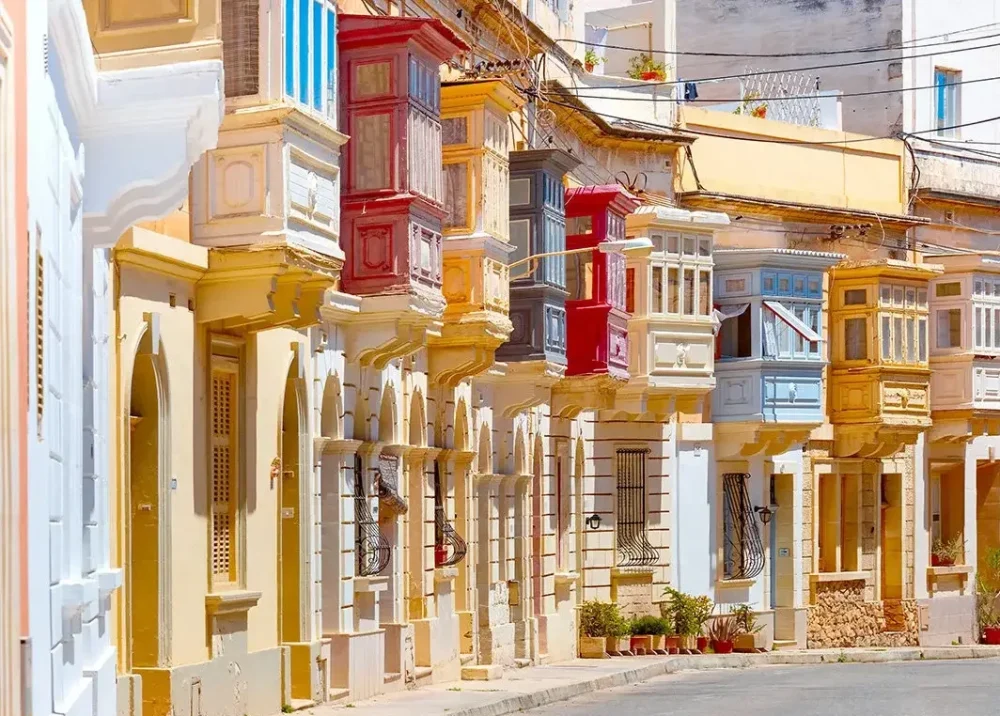Malta has long established itself as one of the best places to buy real estate among foreign investors. Thanks to a stable economy, convenient geographical location, and a favorable tax regime, purchasing property here becomes a profitable decision for both living and investment purposes. However, the process of buying property in Malta has certain peculiarities that need to be taken into account. How to choose a property, what taxes need to be paid, and what documents will be required? Let’s consider each step in detail.
What kind of property can foreigners purchase?
Foreign buyers can purchase property in Malta for foreigners in specific areas, which differ in terms of ownership:

- SDA (Special Designated Areas) – areas where there are no restrictions on property purchases for foreign citizens;
- Ordinary areas – require obtaining an AIP permit, which allows ownership of only one property in the country.
The choice of properties includes apartments, villas, townhouses, commercial real estate, and investment projects. It is worth noting that properties in SDA may be significantly more expensive, but they provide foreign buyers with more rights and flexibility in property management.
Key stages of purchasing property
The process of buying property consists of several consecutive steps that need to be followed for successful property ownership registration.
1. Choosing a property and signing a preliminary agreement
After selecting a suitable property, the parties sign a preliminary agreement (Promise of Sale), which specifies the property’s price, payment terms, and transaction conditions. Usually, the buyer pays a deposit of 10%. The agreement acts as a guarantee of the transaction and obliges both parties to comply with all conditions; otherwise, a financial penalty may follow.
2. Legal verification of the property
Before signing the final contract, it is necessary to confirm the legality of the transaction. The notary verifies the property documents, the presence of debts, or possible legal restrictions on the property. It is important to carefully check not only the property itself but also its compliance with building regulations and permits, especially if the building is old or located in a historic part of the city.
3. Obtaining an AIP permit
If the property is not in SDA, an AIP permit is required. The process may take several weeks. To apply, copies of the buyer’s documents and information about the property to be acquired are needed. The permit is issued on an individual basis and cannot be transferred to third parties.
4. Signing the final sales contract
After completing the checks, the final deed of sale is signed, certified by a notary. At this point, the final payment is made. It is important to note that in some cases, the buyer must pay the remaining amount immediately, while in others, flexible payment schemes are possible if the property is purchased in installments from the developer.
5. Registration of the transaction and taxation
To complete the property purchase procedure in Malta, the property is registered, and the buyer pays a stamp duty. All financial obligations cease, and the owner receives an official document confirming property rights. This document will also be required in case of resale or when applying for a mortgage secured by the property.
Taxes and additional expenses
Purchasing property in Malta involves a number of mandatory payments. These include:
- Stamp duty – 5% of the property sale value;
- Notarial services – typically 1% to 2% of the transaction amount;
- Registration fee – a fixed fee depending on the type of property.
Additionally, there may be costs for property insurance, realtor services, and payment of utility debts if the property is purchased on the secondary market.
How to avoid mistakes when buying?
For a successful property purchase procedure in Malta, it is necessary to learn about the common mistakes made by investors in advance. It is important to consider several key points:
- Thoroughly review the contract – make sure all transaction points are transparent;
- Engage professionals – a notary and a lawyer will help avoid legal issues;
- Check the developer’s reputation – especially important for properties on the primary market;
- Calculate the budget – in addition to the property cost, consider property taxes and associated payments.
Additionally, it is important to check utility payments, building maintenance conditions, and possible future expenses.
Real estate market development prospects
The real estate market in Malta continues to demonstrate stable growth. The main reasons are:
- High interest in property acquisition from foreigners;
- Infrastructure development and increased investment attractiveness of the region;
- Price stability even in conditions of global economic uncertainty;
- Rental demand – active tourist flow supports high rental yields.
Additionally, Malta remains an important financial hub, making property purchase in the country particularly attractive for entrepreneurs and investors.

Conclusions
The process of buying property in Malta requires careful consideration, but when all steps are followed, the process goes smoothly. It is important to study the legal aspects in advance, obtain necessary permits, and involve specialists to assist in the transaction.
Regardless of the purpose of acquisition – whether for personal residence or property investment, buying here remains one of the most profitable decisions. Buying property in Malta is not only an opportunity to enjoy life in one of the most beautiful corners of Europe but also a reliable capital investment with high returns. Long-term market development prospects confirm that Maltese real estate will remain an attractive asset for investors in the coming years.
 en
en  ru
ru  de
de  ar
ar  es
es  hi
hi  fr
fr  nl
nl  it
it  pt
pt  el
el 



